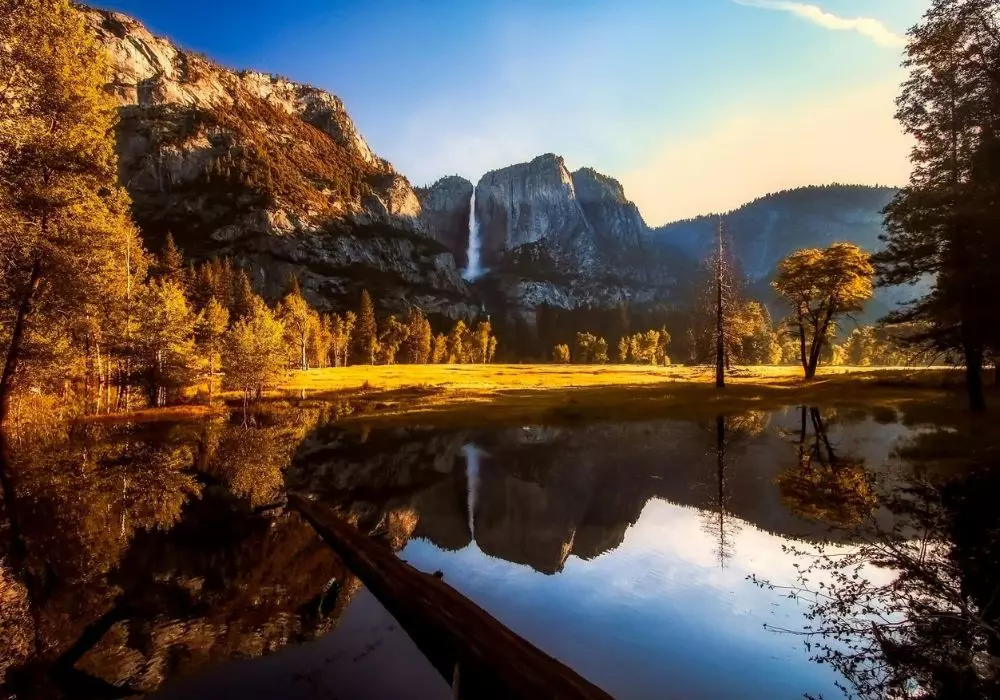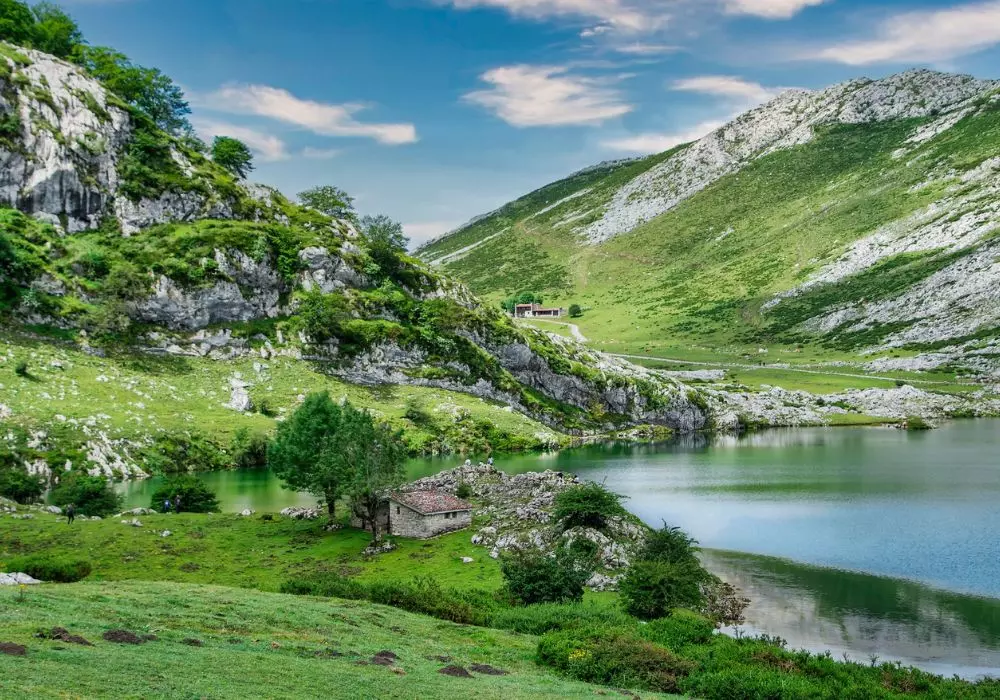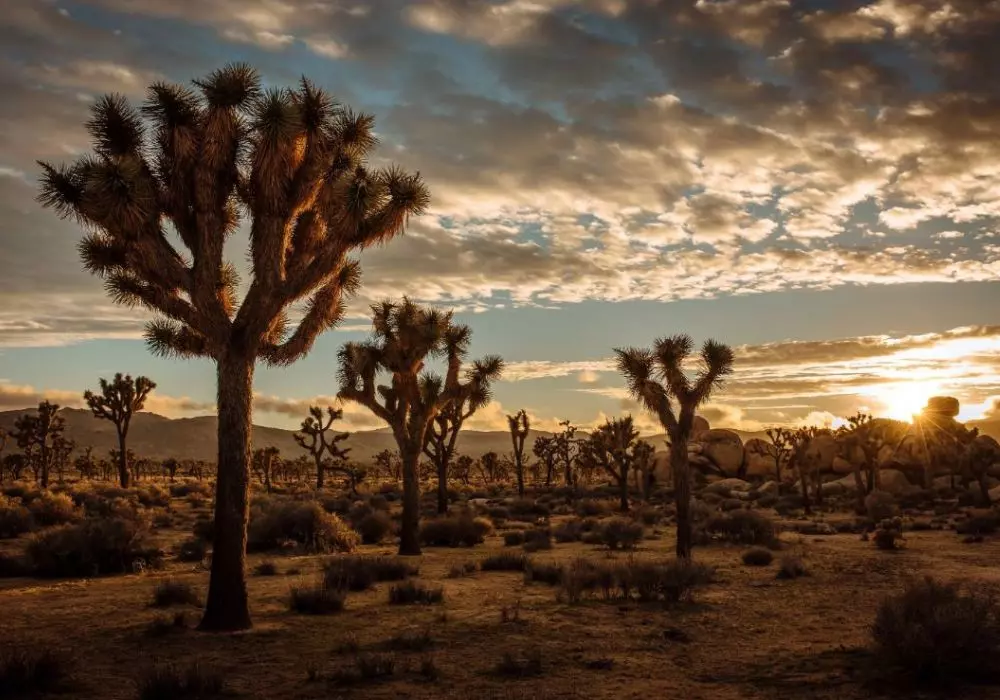Yosemite National Park is a remarkable showcase of natural beauty, nestled in California’s Sierra Nevada mountains. Known for its stunning landscapes, Yosemite National Park attracts millions of visitors each year.
The park is home to iconic landmarks like Half Dome and El Capitan, which draw rock climbers and photographers from around the globe.
Yosemite National Park also boasts some of the tallest waterfalls in North America, including the majestic Yosemite Falls.
The park’s diverse ecosystems support a wide range of wildlife and plant species, making it a paradise for nature lovers.
Whether you’re exploring the lush meadows, ancient giant sequoias, or the breathtaking vistas from Glacier Point, Yosemite National Park offers an unforgettable adventure.
With its rich history and ever-changing scenery, Yosemite National Park is a must-visit destination for anyone seeking to experience the wonders of the natural world.
Yosemite National Park: Key Details and visit Information
| Feature | Description |
| Location | Sierra Nevada, California, USA |
| Size | Approximately 1,187 square miles (761,268 acres) |
| Established | 1890 |
| Climate | Varies from alpine to Mediterranean; cold winters with snow and warm, dry summers |
| Key Attractions | El Capitan, Half Dome, Yosemite Falls, Glacier Point, Mariposa Grove of Giant Sequoias, and Tuolumne Meadows |
| Unique Features | Dramatic granite cliffs, waterfalls, giant sequoias, high mountain meadows, and diverse ecosystems |
| Flora and Fauna | Giant sequoias, pines, oak woodlands, black bears, mule deer, bobcats, and various bird species |
| Visitor Centers | Yosemite Valley Visitor Center, Wawona Visitor Center, and Tuolumne Meadows Visitor Center |
| Accessibility | Many trails and facilities are accessible; accessible shuttle buses and visitor centers available |
| Activities | Hiking, rock climbing, camping, photography, wildlife viewing, and guided tours |
| Hours of Operation | Open year-round; some areas may be closed in winter due to snow |
| Fees | Entrance fees apply; additional fees for camping and guided tours |
| Nearby Attractions | Ansel Adams Gallery, Mono Lake, and Kings Canyon National Park |
History and Background
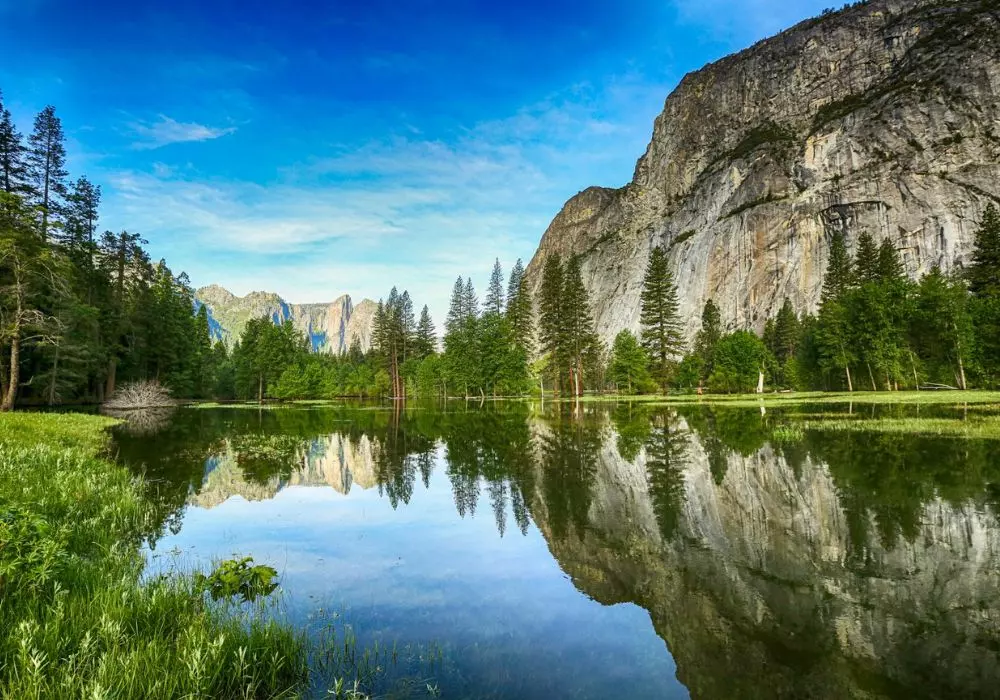

Yosemite National Park has a rich and fascinating history that dates back thousands of years. The region was originally inhabited by the Ahwahneechee people, a Native American tribe who called the valley “Ahwahnee,” meaning “big mouth” due to its shape.
European exploration of the area began in the mid-19th century, leading to increased settlement and tourism.
In 1864, President Abraham Lincoln signed the Yosemite Grant, which set aside the Yosemite Valley and the Mariposa Grove of Giant Sequoias for preservation, marking the first time the U.S. government protected land for public use and enjoyment.
This act laid the foundation for the national park system.
Yosemite officially became a national park on October 1, 1890, largely due to the efforts of conservationists like John Muir, who advocated for the protection of its natural beauty.
The park’s history is also marked by the development of infrastructure to support tourism, including the construction of roads, trails, and accommodations.
Today, Yosemite National Park is recognized not only for its stunning landscapes but also for its role in the conservation movement and the establishment of national parks across the globe.
Key Attractions
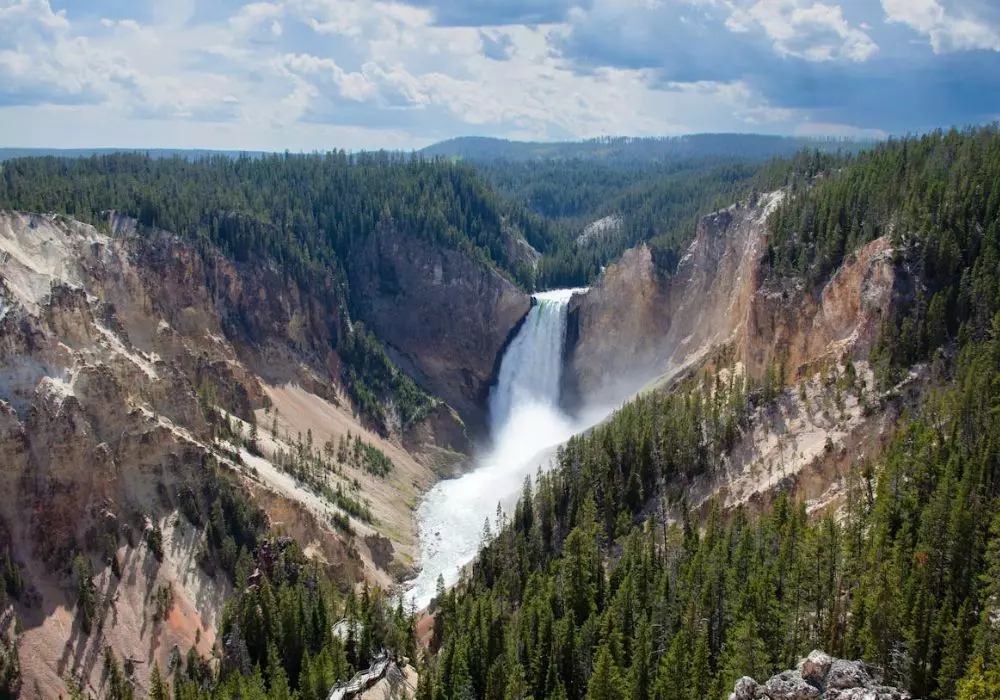

Yosemite National Park is home to a plethora of stunning natural attractions that draw visitors from around the world. Here are some of the most notable key attractions:
1. El Capitan
El Capitan is one of the most famous landmarks in Yosemite National Park. This vertical rock formation stands over 3,000 feet tall and is a favorite among rock climbers.
Its sheer granite face provides a dramatic backdrop for photographs and an impressive challenge for climbers from around the globe.
2. Half Dome
Half Dome is another iconic granite formation that offers both stunning views and challenging hikes. The most adventurous visitors can tackle the Half Dome hike, a strenuous 14-16 mile round trip that includes a final ascent with the aid of cables.
3. Yosemite Falls
Yosemite Falls is one of the tallest waterfalls in North America, dropping a total of 2,425 feet from the top of the upper fall to the base of the lower fall. The falls are particularly spectacular in late spring when the snowmelt is at its peak.
4. Glacier Point
Glacier Point provides one of the most breathtaking panoramic views of Yosemite Valley, including a stunning perspective of Half Dome, Yosemite Falls, and the High Sierra peaks. Accessible by car during the warmer months or via a challenging hike, it’s a must-visit viewpoint.
5. Mariposa Grove
Mariposa Grove is home to over 500 mature giant sequoias, some of the oldest and largest trees in the world. The Grizzly Giant and the California Tunnel Tree are two of the most famous trees in the grove.
6. Tunnel View
Tunnel View offers a classic, postcard-worthy view of Yosemite Valley, including El Capitan, Half Dome, and Bridal veil Fall. It’s a popular stop for photographers and those looking to capture the essence of Yosemite.
Hiking Trails
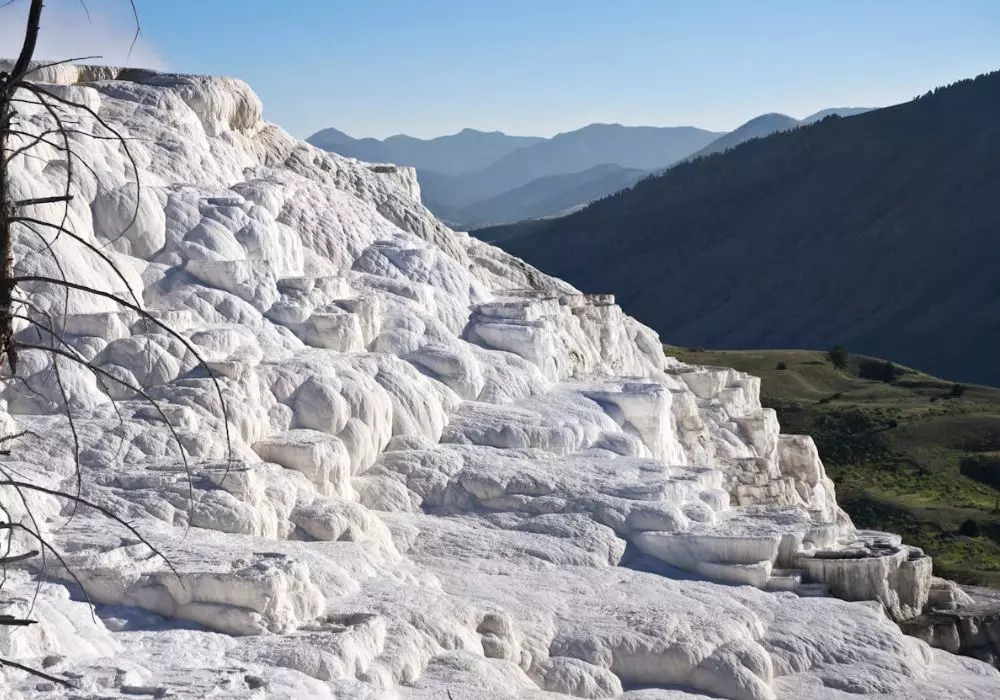

Yosemite National Park boasts an extensive network of hiking trails, ranging from easy walks to strenuous backcountry routes. Here are some of the most popular hiking trails in Yosemite:
1. Mist Trail
The Mist Trail is one of the most popular hikes in Yosemite. It leads hikers up steep steps alongside Vernal Fall and Nevada Fall, providing spectacular views and a refreshing mist from the falls.
The trail can be challenging, but the vistas are worth the effort.
2. John Muir Trail
The John Muir Trail stretches for over 211 miles from Yosemite Valley to Mount Whitney, passing through some of the most scenic parts of the Sierra Nevada.
While few tackle the entire trail, sections of it, such as the segment from Yosemite Valley to Tuolumne Meadows, are popular day hikes.
3. Four Mile Trail
The Four Mile Trail offers a strenuous but rewarding hike from Yosemite Valley to Glacier Point. The trail provides panoramic views of Yosemite Valley, El Capitan, and Yosemite Falls along the way. Although it’s only 4.8 miles one way, the elevation gain makes it a challenging hike.
4. Mirror Lake Trail
The Mirror Lake Trail is a relatively easy hike that leads to a serene lake offering reflections of Half Dome. It’s a great option for families and those looking for a shorter, more leisurely hike.
5. Sentinel Dome and Taft Point
This trail offers a moderate hike with two great destinations. Sentinel Dome provides a 360-degree view of Yosemite, while Taft Point offers dramatic views of Yosemite Valley and the park’s famous fissures.
6. Mariposa Grove Trails
Several trails wind through Mariposa Grove, allowing visitors to explore the giant sequoias up close. The Grizzly Giant Loop and the Guardians Loop are popular choices for those looking to experience these ancient trees.
7. Panorama Trail
Starting at Glacier Point, the Panorama Trail offers an incredible 8.5-mile descent into Yosemite Valley, passing by Illilouette Fall, Nevada Fall, and Vernal Fall. It’s a long hike, but the scenery is unbeatable.
These trails and attractions highlight the diverse and awe-inspiring beauty of Yosemite National Park, making it a premier destination for outdoor enthusiasts and nature lovers.
Wildlife and Flora
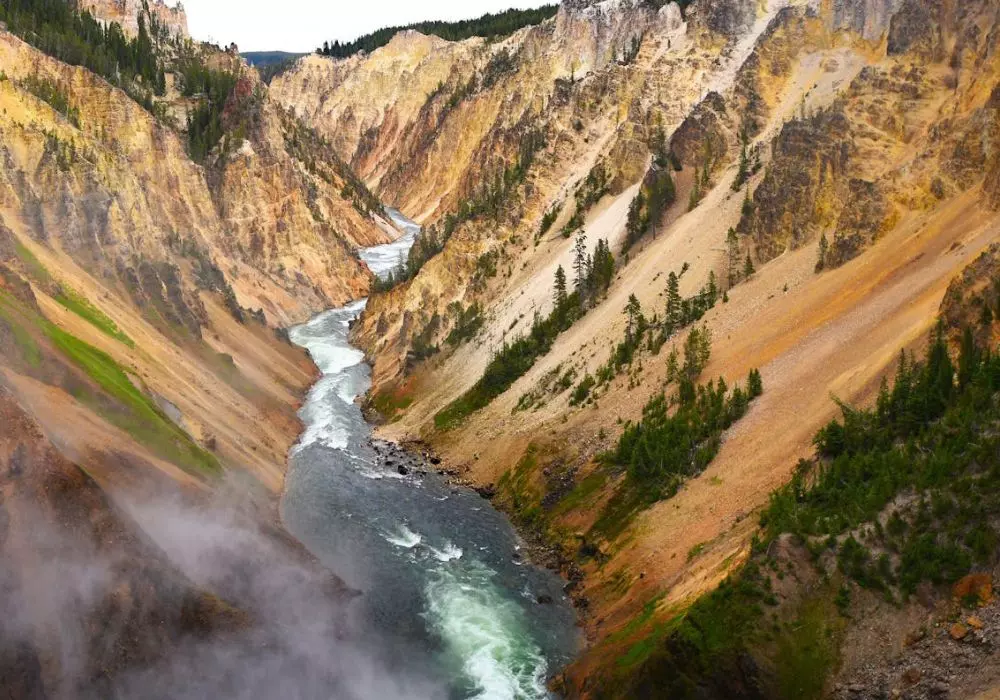

Yosemite National Park is renowned for its rich biodiversity, encompassing a wide array of wildlife and flora. The park’s varied ecosystems, ranging from lush meadows to rugged cliffs, support an impressive diversity of species.
Wildlife: Yosemite is home to over 90 mammal species. Among the most iconic are the black bear and the mule deer.
Black bears, despite their name, can be brown, cinnamon, or even blonde and are often spotted in Yosemite Valley and Mariposa Grove.
Mule deer, recognizable by their large ears, are commonly seen grazing in meadows and along roadsides. Other notable mammals include bobcats, mountain lions, and the elusive Sierra Nevada red fox.
The park is also a haven for birdwatchers, with over 260 bird species recorded. Bald eagles, peregrine falcons, and the great gray owl are some of the rarer birds that can be spotted.
Yosemite’s waterways support a variety of fish species, including the rainbow trout and the endangered Sierra Nevada yellow-legged frog.
Flora: The flora of Yosemite is equally diverse, with over 1,400 species of plants. The park is famous for its giant sequoias, found in Mariposa Grove, Tuolumne Grove, and Merced Grove.
These ancient trees, some over 3,000 years old, are among the largest and oldest living organisms on Earth.
The park’s forests are dominated by conifers, including ponderosa pine, sugar pine, and incense cedar.
In the meadows and along streams, visitors can find vibrant wildflowers such as lupines, columbines, and the Yosemite bog-orchid.
The higher elevations host unique alpine flora, including the hardy mountain heather and the delicate alpine aster.
The interplay of Yosemite’s diverse wildlife and flora creates a dynamic and vibrant ecosystem, making the park a vital sanctuary for both common and rare species.
This rich biodiversity not only enhances the natural beauty of Yosemite but also underscores the importance of conservation efforts to protect these species and their habitats.
Camping and Accommodation


Yosemite National Park offers a variety of camping and accommodation options to suit all types of visitors, from seasoned backpackers to families looking for a comfortable stay.
Camping: The Park features 13 campgrounds, many of which are open year-round.
Popular options include Upper Pines, Lower Pines, and North Pines, all located in Yosemite Valley and offering close proximity to major attractions like Yosemite Falls and Half Dome.
These campgrounds typically require reservations, especially during peak seasons.
For a more remote experience, campgrounds like Tuolumne Meadows and Porcupine Flat provide a peaceful setting in the high country.
Backpackers can take advantage of wilderness permits to explore Yosemite’s extensive backcountry.
Designated wilderness campsites allow for a more rugged and solitary experience amidst the park’s stunning landscapes. Bear-proof food storage is mandatory in all camping areas to protect both visitors and wildlife.
Accommodation: For those seeking more comfort, Yosemite offers a range of lodging options. The historic Ahwahnee Hotel, renowned for its elegant architecture and rich history, provides luxurious rooms and fine dining.
Yosemite Valley Lodge, located near Yosemite Falls, offers more affordable accommodations with modern amenities.
Curry Village features a variety of lodging options, including tent cabins, motel rooms, and standard cabins. It’s a great choice for families and groups, offering easy access to park activities and services.
Housekeeping Camp, located along the Merced River, offers a unique camping experience with basic cabins that include beds, a grill, and a picnic table.
Alternative Lodging: Outside the park, the communities of El Portal, Mariposa, and Groveland offer additional lodging options, including hotels, motels, and vacation rentals.
These locations provide convenient access to Yosemite while offering more amenities and often lower rates than in-park accommodations.
Photography Tips
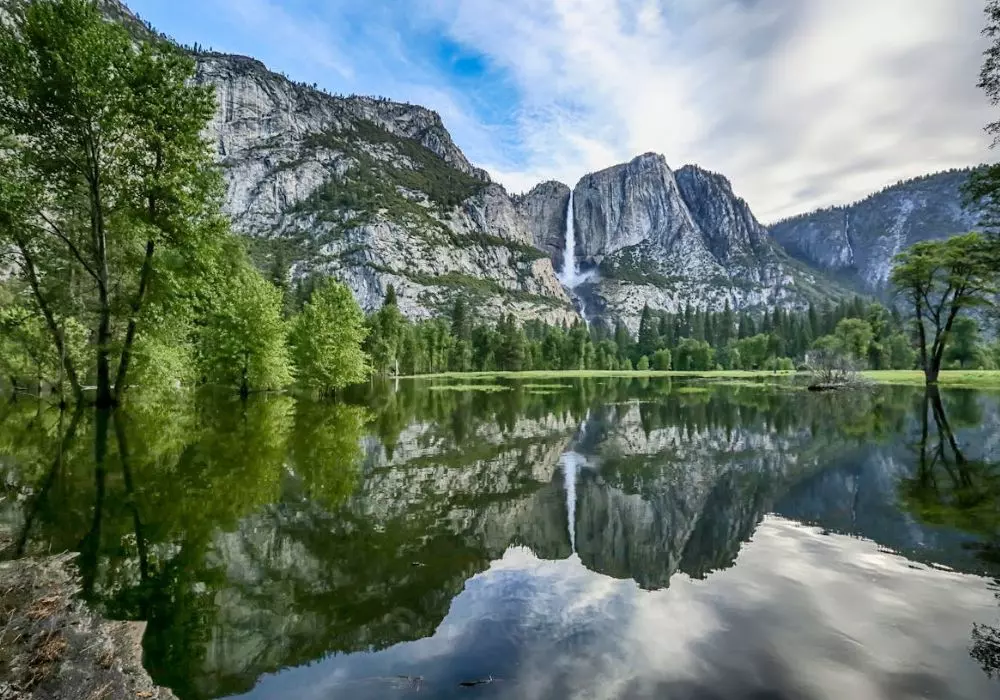

Yosemite National Park is a photographer’s paradise, with its dramatic landscapes, diverse wildlife, and iconic landmarks providing endless opportunities for stunning shots. Here are some tips to help you capture the beauty of Yosemite:
1. Golden Hours: The best times for photography are during the golden hours—shortly after sunrise and before sunset. The soft, warm light during these times enhances the natural beauty of the park, casting long shadows and highlighting textures.
2. Iconic Locations: Make sure to visit and photograph Yosemite’s most iconic spots. Tunnel View offers a classic view of El Capitan, Half Dome, and Bridal veil Fall.
Glacier Point provides panoramic vistas of the valley and the High Sierra peaks. Don’t miss capturing the reflections of Half Dome in Mirror Lake or the towering Yosemite Falls.
3. Wildlife Photography: For wildlife photography, use a telephoto lens to capture animals from a safe distance.
Early morning and late afternoon are the best times to spot wildlife such as black bears, mule deer, and various bird species.
Be patient and respectful of the animals’ space.
4. Long Exposures: Experiment with long exposure photography to capture the movement of water in Yosemite’s rivers and waterfalls.
Use a tripod to keep your camera steady and a neutral density filter to reduce the light entering the lens, allowing for longer shutter speeds during daylight.
5. Star Photography: Yosemite’s high elevation and low light pollution make it an excellent location for astrophotography.
Head to Glacier Point or Olmsted Point for unobstructed views of the night sky. Use a wide-angle lens, set a high ISO, and keep the shutter open for 15-30 seconds to capture the stars.
6. Seasonal Changes: Each season offers unique photographic opportunities. Spring brings roaring waterfalls and blooming wildflowers, while fall offers vibrant foliage.
Winter snow transforms the park into a serene wonderland, and summer provides clear skies and accessible trails.
7. Composition: Pay attention to composition. Use leading lines, such as trails or rivers, to draw the viewer’s eye into the scene. Frame your shots with natural elements like trees or rocks to add depth and interest.
By following these tips and being prepared with the right equipment, you can capture breathtaking images that showcase the natural splendor of Yosemite National Park.
Seasonal Activities
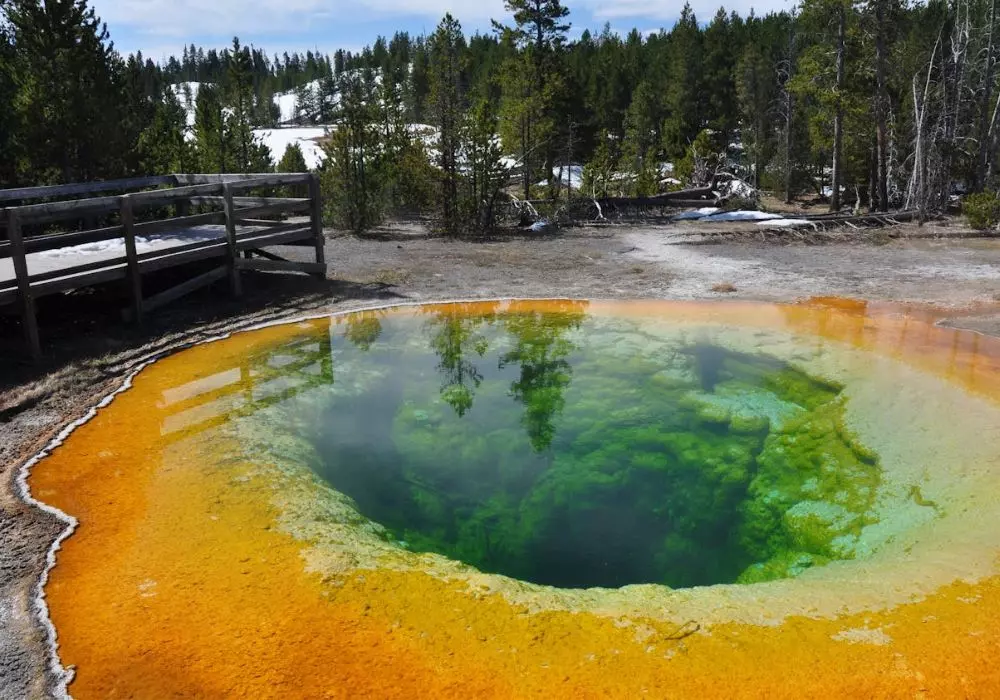

Yosemite National Park offers a diverse range of activities that vary with the seasons, making it a year-round destination for outdoor enthusiasts.
Spring: Spring is a spectacular time to visit Yosemite, as the waterfalls are at their fullest from the snowmelt. Popular activities include hiking to Yosemite Falls, Bridal veil Fall, and Vernal Fall.
The park’s meadows, such as Cook’s Meadow and Wawona Meadow, bloom with wildflowers, providing excellent opportunities for photography and nature walks.
Spring is also a great time for bird watching, as migratory birds return to the park.
Summer: Summer is the peak season in Yosemite, with warm weather and all park facilities open. Hiking is the most popular activity, with trails ranging from easy walks to challenging climbs.
The Mist Trail, Half Dome, and the John Muir Trail are favorites among hikers.
Visitors can also enjoy camping, rock climbing, and water activities such as rafting on the Merced River.
Ranger-led programs, including guided hikes and evening talks, are available throughout the summer.
Fall: Fall offers a quieter experience with fewer crowds and stunning autumn foliage. The park’s trees, including bigleaf maples, black oaks, and dogwoods, display vibrant colors.
This is an excellent time for hiking, photography, and wildlife viewing.
The cooler temperatures make it ideal for exploring trails like the Four Mile Trail to Glacier Point or the Panorama Trail.
Fall is also a great time for rock climbing, with cooler rock surfaces and less crowded routes.
Winter: Winter transforms Yosemite into a serene snowy wonderland. Activities include cross-country skiing, snowshoeing, and ice skating at the Curry Village Ice Rink.
Badger Pass Ski Area offers downhill skiing and snowboarding.
The park’s lower elevations, such as Yosemite Valley, remain accessible for winter hiking and photography. Snow-covered landscapes provide unique photo opportunities, especially of iconic sites like El Capitan and Half Dome.
Travel Tips
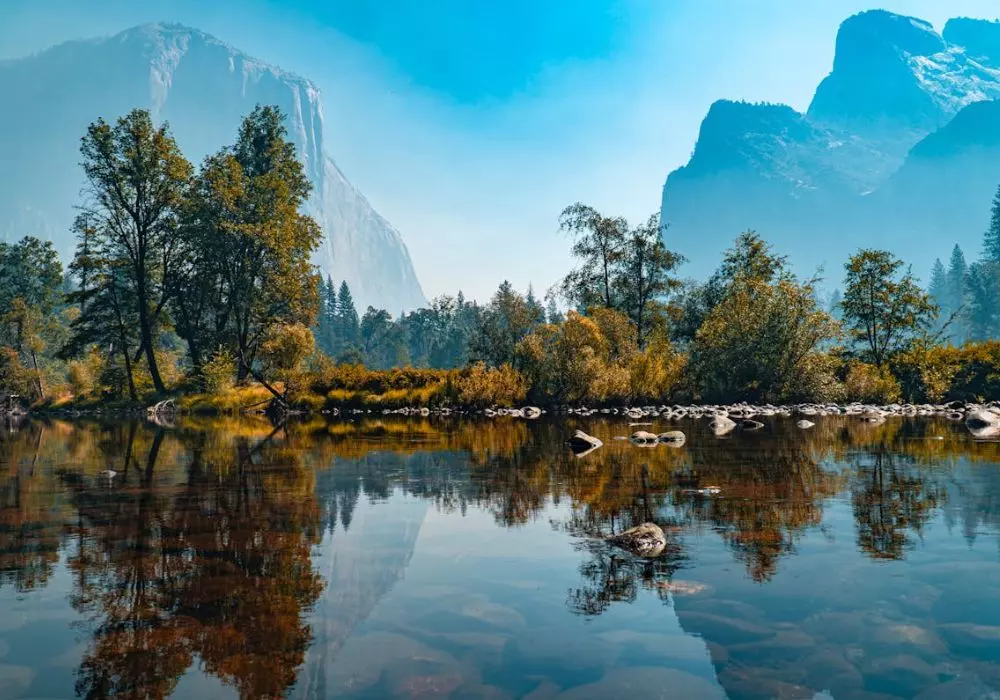

Planning a trip to Yosemite National Park requires some preparation to ensure a safe and enjoyable visit. Here are some travel tips to help you make the most of your trip:
1. Reservations: Make reservations well in advance, especially if visiting during peak seasons (spring and summer). Campgrounds, lodges, and popular hiking permits, like the Half Dome hike, fill up quickly.
2. Timing: To avoid the heaviest crowds, visit during the shoulder seasons (late spring and early fall) or mid-week. Arriving early in the morning can also help you find parking and enjoy popular sites with fewer people.
3. Packing: Pack layers of clothing to accommodate varying temperatures, as mornings and evenings can be cool even in summer.
Bring sturdy hiking boots, a hat, sunscreen, and plenty of water. If visiting in winter, pack warm clothing, gloves, and snow gear.
4. Transportation: Consider using the park’s shuttle system to reduce traffic congestion and parking difficulties. The Yosemite Valley Shuttle provides free transportation to major points of interest within the valley.
5. Safety: Be bear aware by storing food properly in bear-proof lockers or canisters, never leaving food unattended, and following all park guidelines.
Carry a map and know your route before setting out on hikes. Cell service is limited, so don’t rely on your phone for navigation.
6. Permits: Some activities, such as backpacking, require wilderness permits. If planning to hike Half Dome, a permit is also needed. Obtain these permits in advance through the park’s reservation system.
7. Stay Informed: Check the park’s official website or visitor centers for current conditions, road closures, and weather updates. This information is crucial, especially during winter months when snow and ice can affect accessibility.
Conclusion
Yosemite National Park stands as one of the most iconic natural wonders in the United States. With its breathtaking landscapes, Yosemite National Park offers unparalleled beauty and adventure.
Visitors can marvel at the towering granite cliffs, explore diverse hiking trails, and experience the awe-inspiring waterfalls that make Yosemite National Park famous worldwide.
The park’s rich biodiversity and vibrant flora provide a sanctuary for wildlife enthusiasts and nature lovers. Whether you’re photographing the stunning vistas, camping under the starry skies, or simply taking in the serene environment, Yosemite National Park promises an unforgettable experience.
Every season brings a new perspective, making each visit to Yosemite National Park unique and memorable. Embrace the opportunity to explore and connect with nature in this extraordinary setting, and discover why Yosemite National Park continues to captivate the hearts of all who visit.
